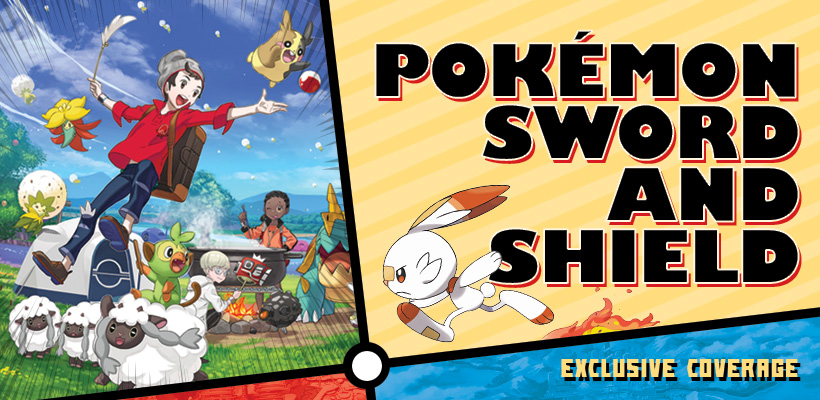If you’ve been following our coverage of Pokémon Sword and Shield, you know we’ve covered a ton of topics, such as autosave, drawing Pokémon, and the inspiration behind the Galar region. However, in the time since we spent a full day in Game Freak’s Tokyo offices for this month’s Pokémon Sword and Shield cover story, we’ve thought of several new questions to ask the development team.
Thankfully, Pokémon Sword and Shield director Shigeru Ohmori and producer Junichi Masuda recently visited Redwood City, Calif. just outside of San Francisco, giving us an opportunity to not only play the first hour and a half of Pokémon Sword and Shield, but also catch up with them about several additional topics related to the upcoming Switch games.

What was the idea behind having regular interactions with the League Champion, Leon, from the earliest stages in the game?
Ohmori: One of the biggest reasons for having you interact with the champion and being shown the prowess of the champion so early is that Sword and Shield is a continuation of traditional RPGs like X and Y, Sun and Moon. So really conveying that aspect of you’re going to go on your journey, doing the gym battles, and there’s this really powerful champion you want to aspire to defeat. That was one of the aspects we wanted to convey, so we put the champion in the story much more.
On Leon’s cape, he has all kinds of endorsements and advertisements. One of them was the Game Freak logo. Game Freak has a history of being in Pokémon games. Does that mean we’ll also be able to find the studio in Galar?
Ohmori: Good eye on you! [Laughs] I hope players will discover for themselves whether it’s there or not.
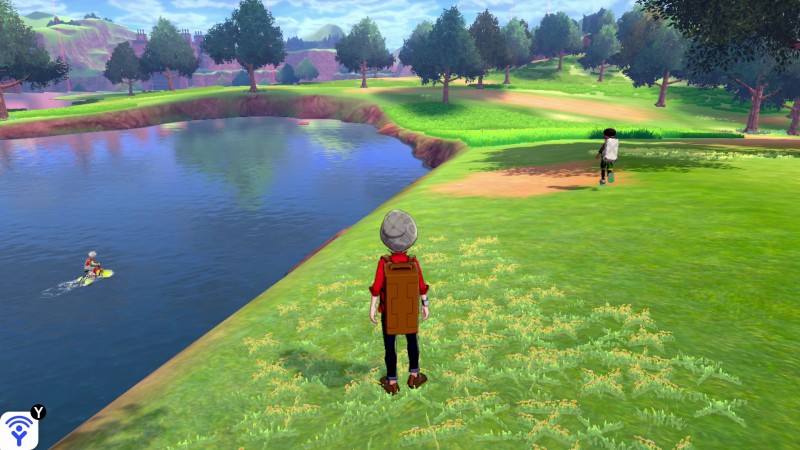
When you’re in the Wild Area, do you have to set your game to a certain status so players can interact with you?
Ohmori: So how it works is there’s this feature called the Y-Comm, and you can activate that to broadcast your status or what you want to do, like, “I want to trade,” “I want to battle,” or whatever, and then that gets broadcasted out to anyone you’ve been matched up with in the back end. They’ll see that, and if they want to reply or if they’re also saying they want to battle, it’ll match you together and then it goes into a synchronous connection.
One of the cool things you can do now is – in previous games, we had Wonder Trade where you could throw out a Pokémon and it would find someone to trade with and the trade would happen and it would save the game. It was a very active process. We’ve kind of improved that. So now, [with Surprise Trades], you can choose a Pokémon for trading, and then it’ll happen in the background, so while you’re just adventuring, it’ll find someone to trade with and after some times progresses, you’ll suddenly see that your Pokémon was traded for something else. We found a way to make it happen more seamlessly without having to save and actively do it one at a time.
Masuda: And it’s also not just exclusive to the Wild Area. I know we’re just talking about the Wild Area right now, but this is probably going to be one of the more popular features that players engage with in the game.
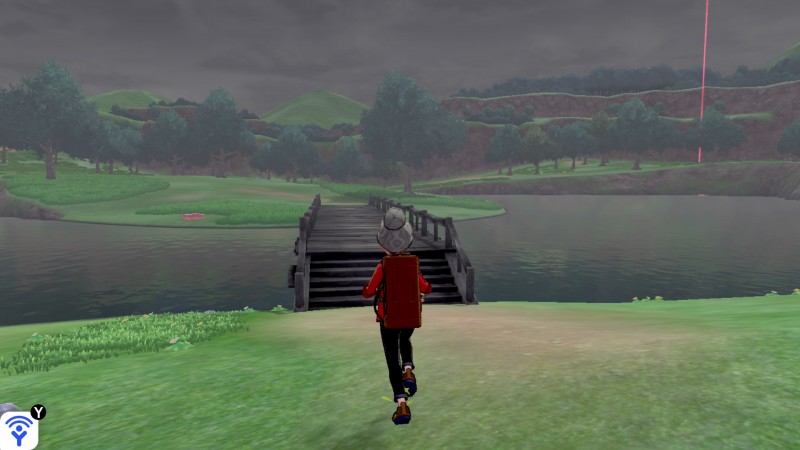
You spoke earlier about striving to make the “ultimate” Pokémon game with this first new generation on consoles. Do you think the length of this adventure is comparable to other Pokémon games?
Ohmori: I think it’s hard to go into details of that, but in terms of the volume or the amount of content in the main adventure, it’s comparable to other Pokémon generations that we’ve played. I think there’s a lot of interesting activities that, for example, completing the Pokédex or really going out into the Wild Area and engaging with those mechanics, that’ll add a lot of replay value for players who are looking to get really hardcore into that.
Masuda: I feel like a lot of players these days will typically burn through content and try to go to the ending as fast as they can. From our perspective, we spent three years making it! [Laughs] We do hope that players will take their time through the adventure, but yeah, that’s my perspective.
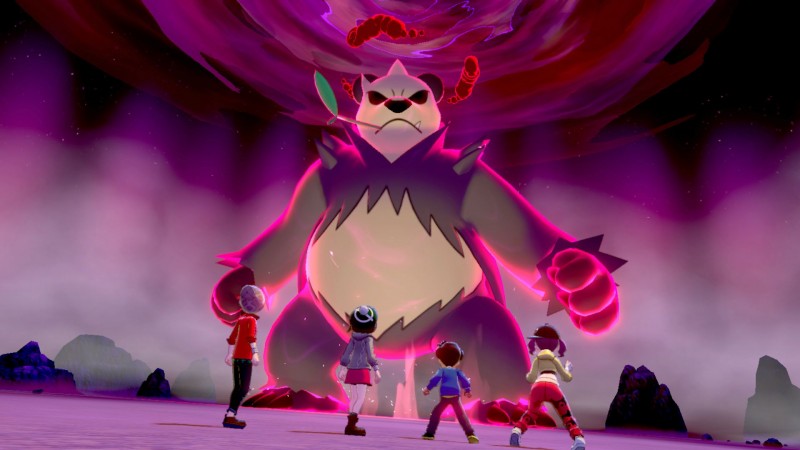
[Planning director] Kazumasa Iwao brought up that Max Raid Battles have a difficulty as high as or above anything we’ve seen in the mainline series to this point. Are there any other parts in Sword and Shield that you think will be difficult for players?
Ohmori: With Max Raid Battles, we have the star ranking system and I think what he’s talking about was when you go to five stars – the highest-ranked ones – they are quite difficult. I’ve tried to play them on my own and lost many times. When you get to the highest stuff, you need really good team coordination to defeat them. I can’t really go into details, but I can say that there’s other content for players to engage with over the long term and more deeply after you finish the main story.
What’s the deal with the Pokémon timeline?
Masuda: It starts to get a little complicated if you pay too much attention to timelines. Like, there might be a professor that appears and it wouldn’t make sense at all if we applied that kind of timeline logic. So we try not to apply it too rigorously. Maybe one hint is that if a character is appearing with Professor Oak, they’re living in the same era. Rather than some series where it makes sense to have the timeline progress as you go and the story evolve, the approach that Pokémon takes is expanding the world, like what the regions are, and making it richer as we go. Rather than a timeline, it’s more of a physical space thing.
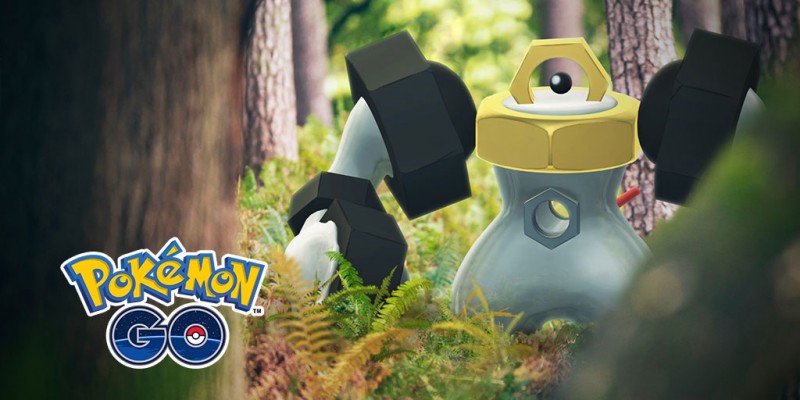
Are we seeing Meltan and Melmetal in Sword and Shield?
Masuda: Hm! No comment!
We spoke in Tokyo about how the Galar region was inspired by the media tour you did for Sun and Moon, which took you to the U.K. Where are you doing media tours for Sword and Shield?
Masuda: Redwood! [Laughs]
Anywhere else?
Masuda: London, actually.
Finally, we’ll get a Pokémon game based on the England!
Masuda: [Laughs]
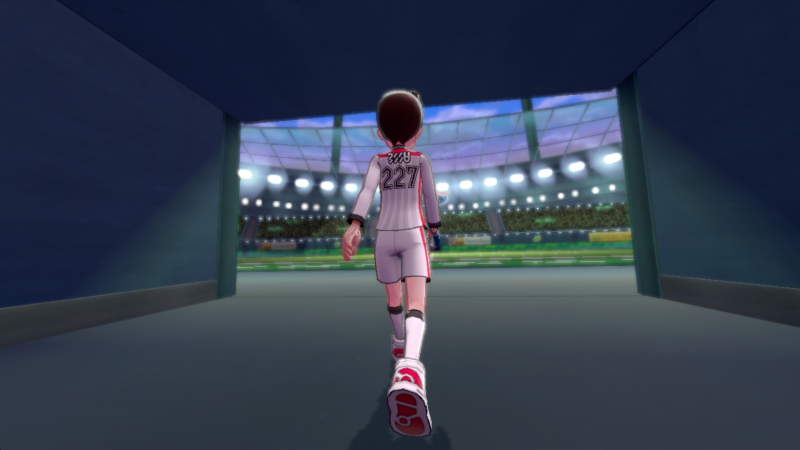
Obviously, there was some confusion stemming from an earlier conversation we had regarding the number of gyms in Sword and Shield. However, from the confusion, people were very excited about the possibility of a dark-type gym. Can you say whether or not players battle a dark-type gym in Sword or Shield?
Ohmori: I don’t want to say. [Laughs] Sorry!
In the initial quote, you said that, in the story, the gyms battle every year to determine which is in the major league or minor league. Is there a possibility that over time, they’ll be rotated in the game?
Ohmori: [Laughs] It is just a background to the story. I can’t really say any more than that.
How frequently do you battle in stadiums in this game?
Ohmori: That’s where all the gym battles take place, so there are at least eight opportunities to play in them.
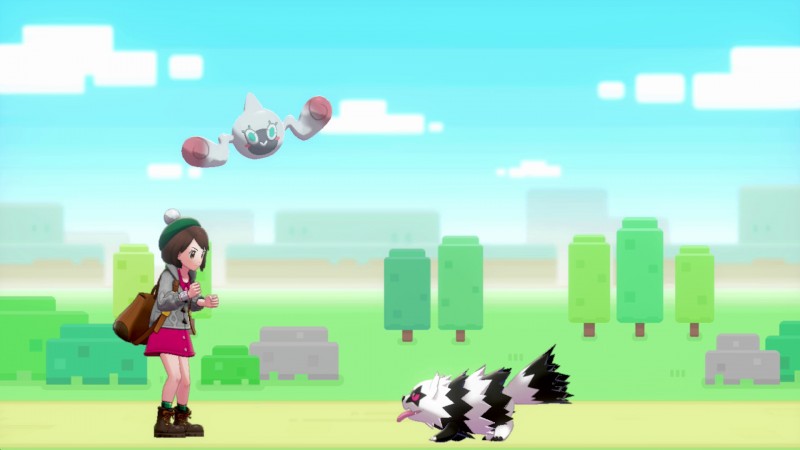
Since Pokémon games are always released in pairs, at what point in development does the team go from developing one executable to two executables?
Masuda: They obviously share the same underlying systems, so throughout the early part of development, when we’re developing those core systems, it’ll be a single version. It’s really when we start getting into more of which Pokémon appear in which game, and kind of the data table stuff, where they split into two different versions where we have to manage both versions.
So it seems that it’s fairly late in the process?
Masuda: Yeah. Definitely the latter half of development. In terms of the conceptual phase, we always start with two versions in mind, but then in development, you’re building the core systems first and then splitting it up. It also depends on the project. Like, the Let’s Go, Pikachu and Eevee games were split much earlier in development than these ones for example.
Of course, it can actually be problematic sometimes because the team, when we’re test-playing the games internally before we actually go into the formal debug process, people have their favorites for which version. For example, for Let’s Go, Pikachu and Eevee, a lot of the team preferred Eevee, and they’d always be playing that, and that would be more polished and in a better state. For the Pikachu version, we had to kind of then make up for lost time later on. What about Sword and Shield? You probably have more people playing Sword, right? Do you have more bugs in Shield? [Laughs]
Ohmori: [Laughs] No, no! They’re both good!
Masuda: In the end, we do focus on debugging both versions the same, but when you first do that split, there’s definitely some internal favoritism that can create some lopsidedness.
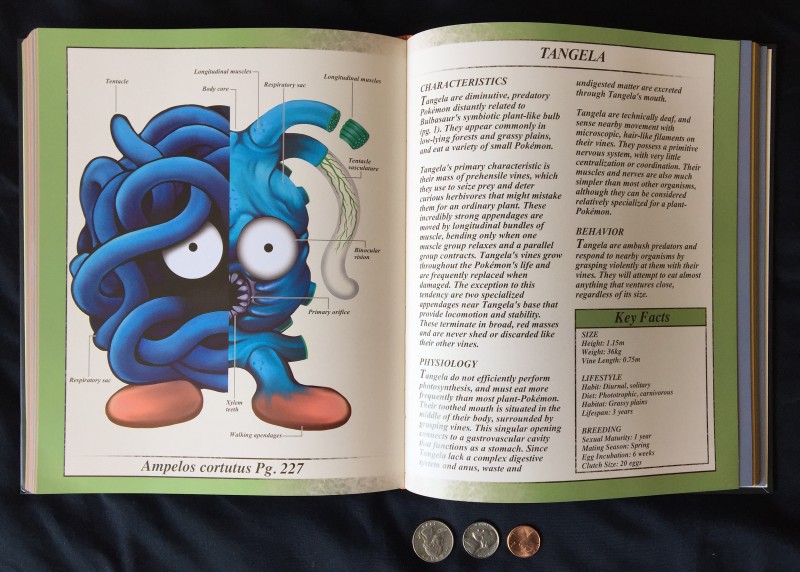
PokéNatomy: The Science of Pokémon (An Unofficial Guide) on Etsy
Have you seen those artists out there doing dives into the anatomy of Pokémon?
Masuda: I think it’s really interesting to see people try to take like a scientific analysis approach to Pokémon and try and discover the mysteries of them. There’s actually a book that came out in Japan a long time ago. It’s like this fake science research division or something like that. They came up with a book that tried to explain Pokémon from a scientific perspective if they were to exist.
Are people like that the real-life Pokémon professors?
Masuda: Yeah, I think that would work. [Laughs]
Pokémon Sword and Shield launch on Switch November 15. For more coverage on these games, check out our exclusive coverage hub by clicking on the banner below.
